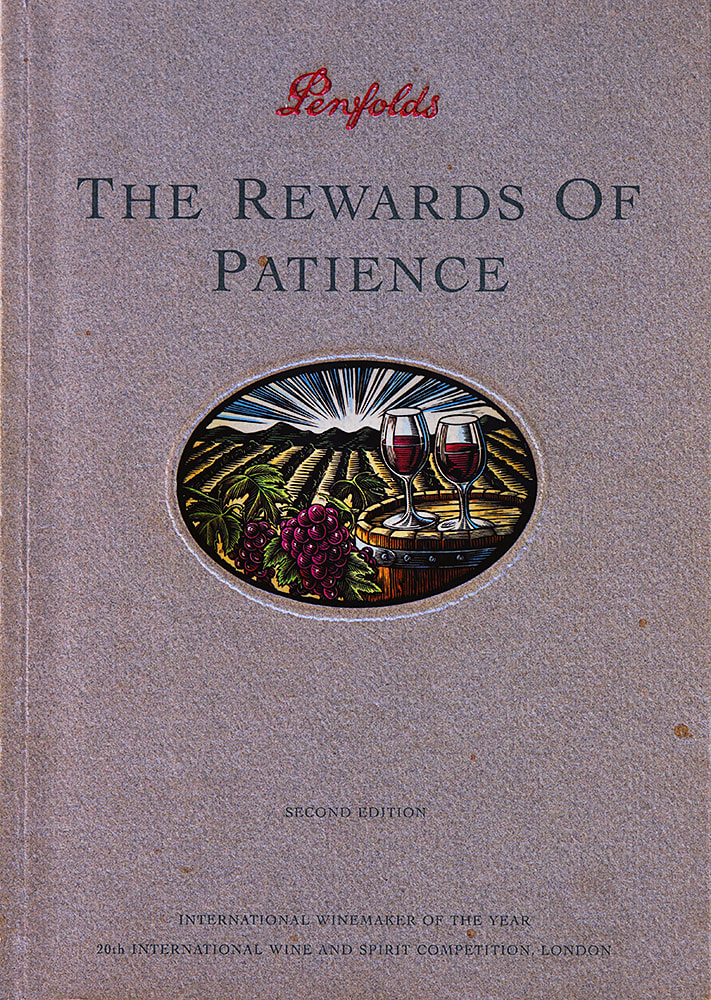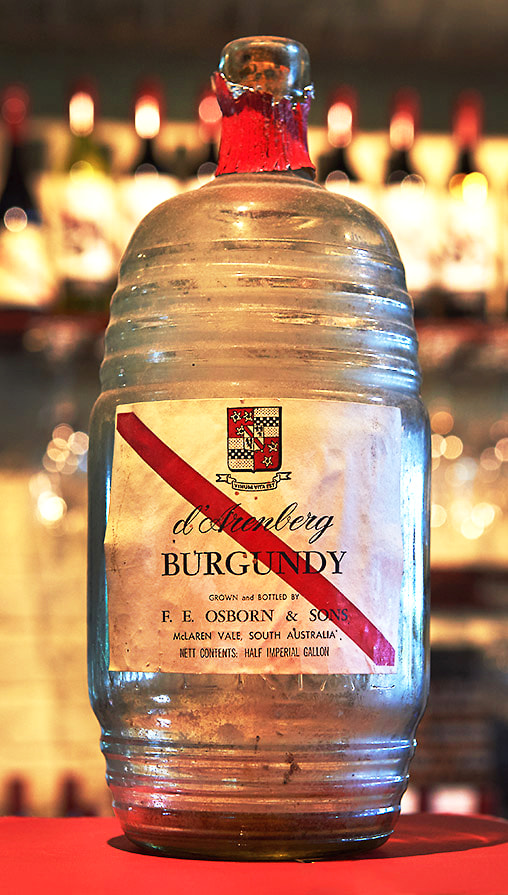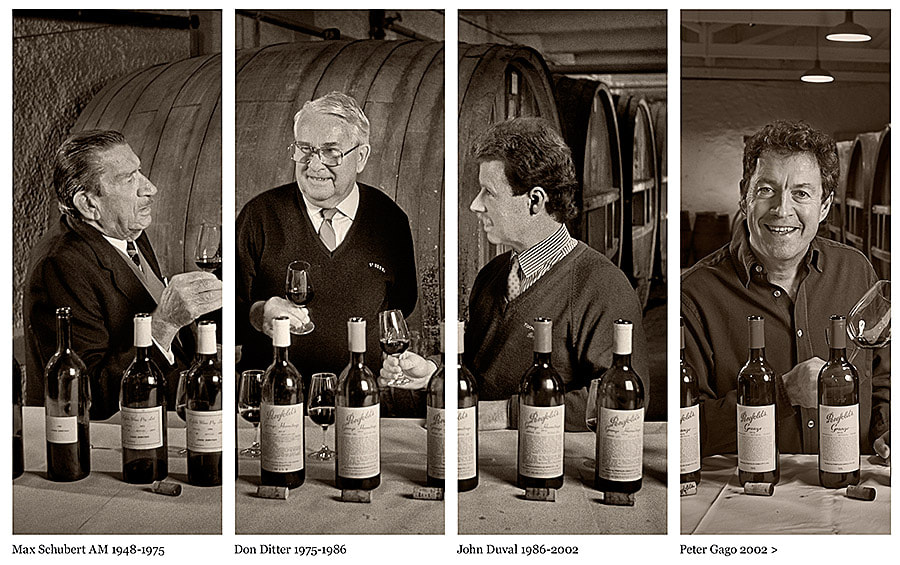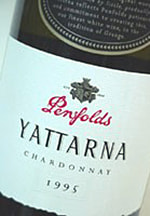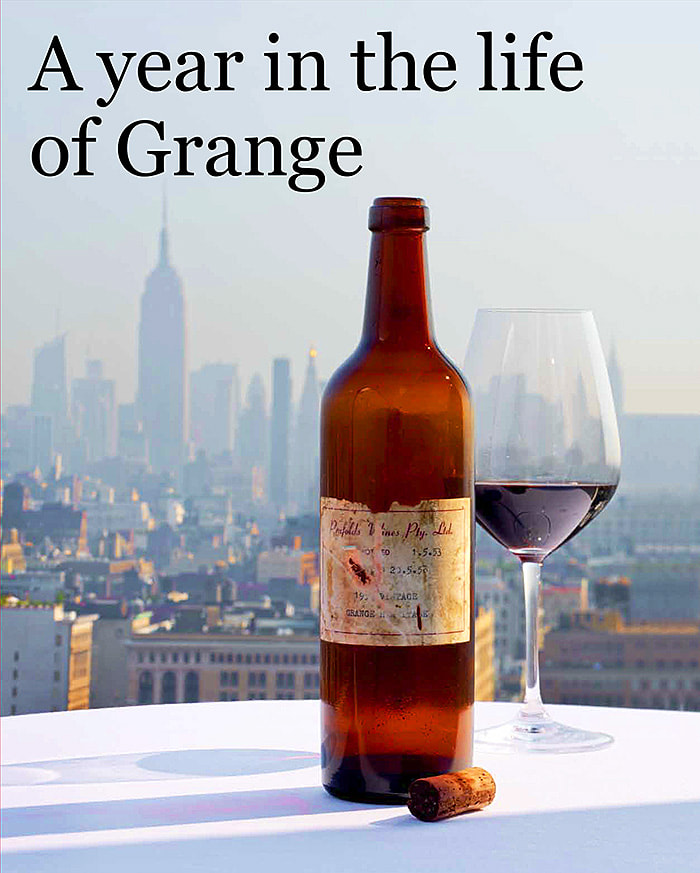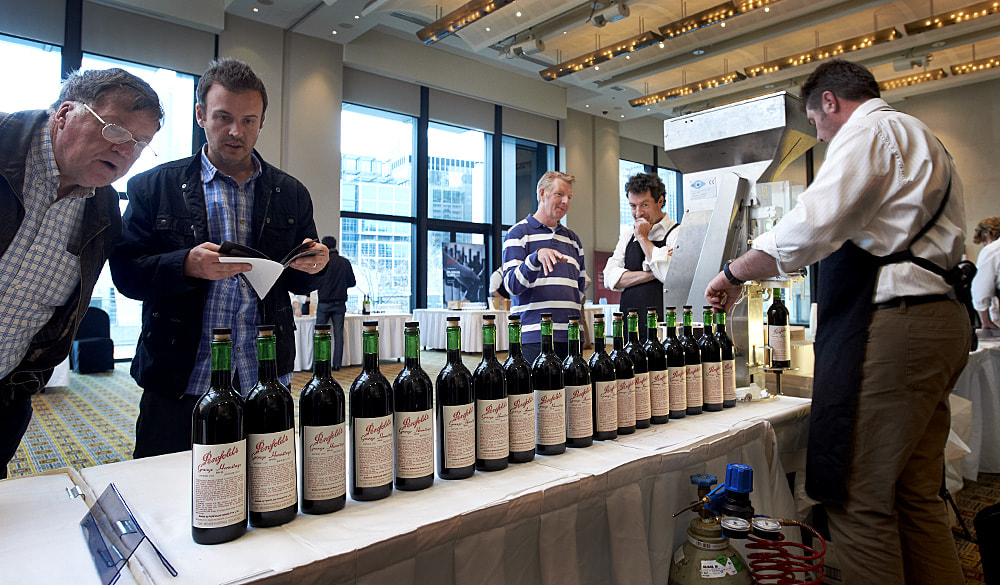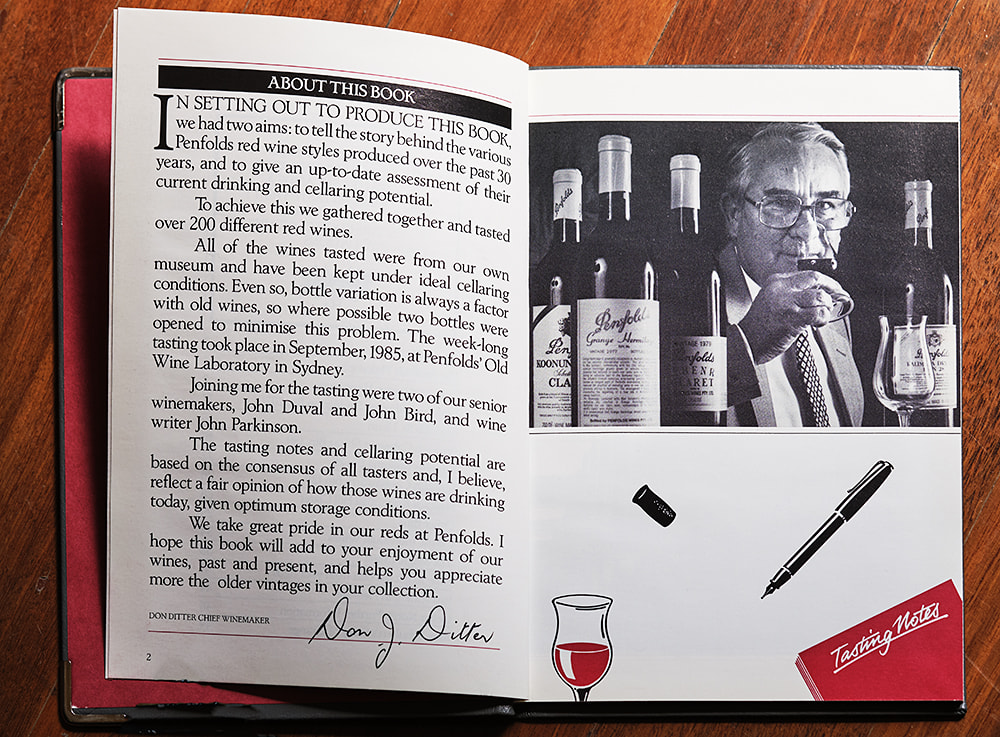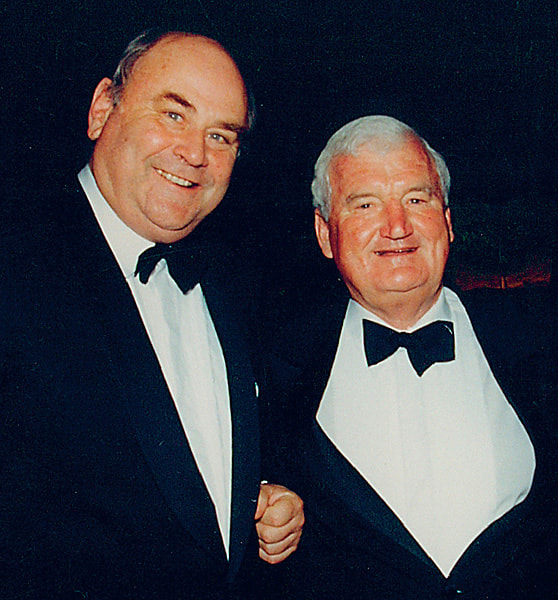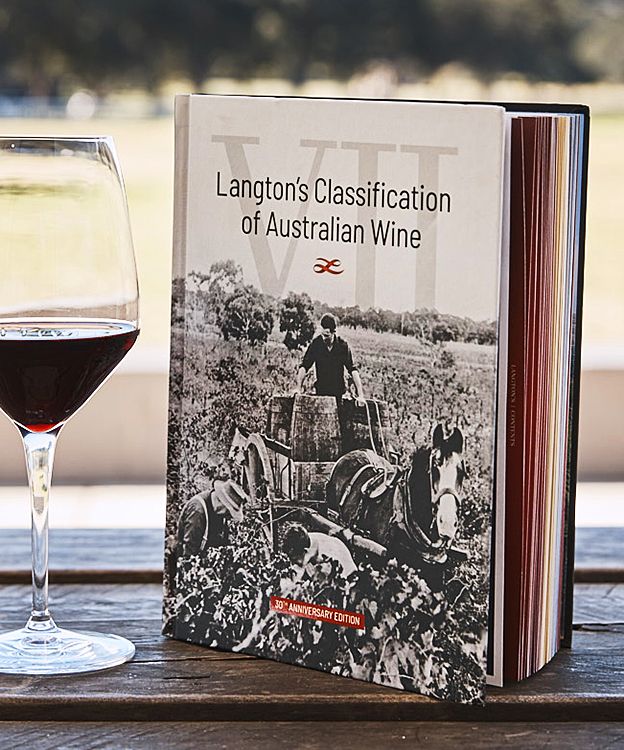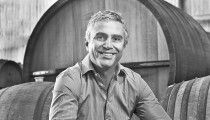I first heard of Dr Richard Smart one day in…

Adrian Read : Wine Communicator
Adrian Read is one of the unsung protagonists of the Australian wine industry.
With a background in journalism he was instrumental in professionalising and creating new standards in wine-related public relations.
He is best remembered for his PR agency Read McCarthy and work with Penfolds during the mid-1980s to the early 2000s.
He introduced the Penfolds Red Wine Clinics, the most successful recorking program in the world, and took the Penfolds Rewards of Patience book from a promotional brochure to a credible and authoritative collector’s guide.
Adrian and I worked together on the Australina newspaper in Sydney in the early 70’s.
To mark his retirement at the end of February 2020 I asked Andrew Caillard, MW (no stranger to Read McCarthy, Langton’s and Penfolds!) to interview Read about his life and career in wine and our old mate Neil Duncan to take his portrait.
I’m very plesed he agreed, it’s a great read.
Your early life ?
I was born in Kent, in the south of England, in 1946.
I have two younger sisters, Alison and Anna.
My dad Alfred, a teacher, and my mum Charmian, emigrated to Australia in 1956, as classic ten-pound poms.
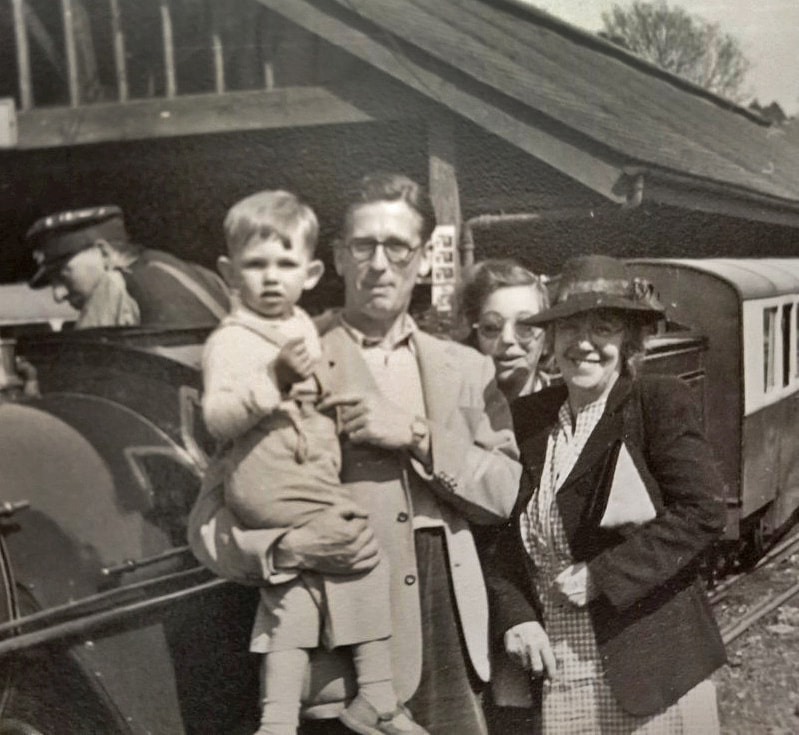
Adrian with his parents Alfred and Charmain and a family friend at a minuture railway in Kent in 1949.
We came by sea, via Cape Town, because of the Suez Crisis.
I turned 10 on the Cape Town to Perth leg which I remember being incredibly long and boring.
We settled in Sydney, at Malabar, near Long Bay Gaol and I went to Randwick Boys High.
I did Arts at Sydney University, graduating in 1968, the first in my family to do so.
I joined The Australian newspaper as a cadet reporter, which was unusual in those days with most journos starting at 15 as copy boys.
I remember being asked why I had wasted five years of my life studying when I could have been working and earning money.
Why wine ?
I was the right age in the 1960s to be a very active participant in the red wine boom.
We students drank dry red wine from bottles and two-litre glass flagons.
I remember Penfolds and McWilliams.
I noticed that even with cheap wines, some were much better than others.
This made me curious and I started reading books by people like Cyril Ray and, a bit later, Hugh Johnson and Jancis Robinson, talking with others about wine and making some weekend visits to the Hunter Valley.
It’d be fair to say that the wine tail has been wagging the Adrian dog ever since.
Table wine was still something of a novelty and I remember going with my father to a dark and dingy ‘wine bar’ in Glebe where the special was a north-east Victorian Muscat sold as ‘four-penny dark’.
Time as a journalist
I really loved journalism, and journalists, but I soon realised that although I was a capable interviewer and editor, I wasn’t going to change the world.
At the Sunday Australian I was (restaurant critic) Leo Schofield’s first editor and I later co-edited the National Times colour magazine.
In the mid-70s I professionalised Australian Gourmet magazine, seeing it through some ownership changes and eventually into ACP (Australian Consolidated Press, now Bauer Media).
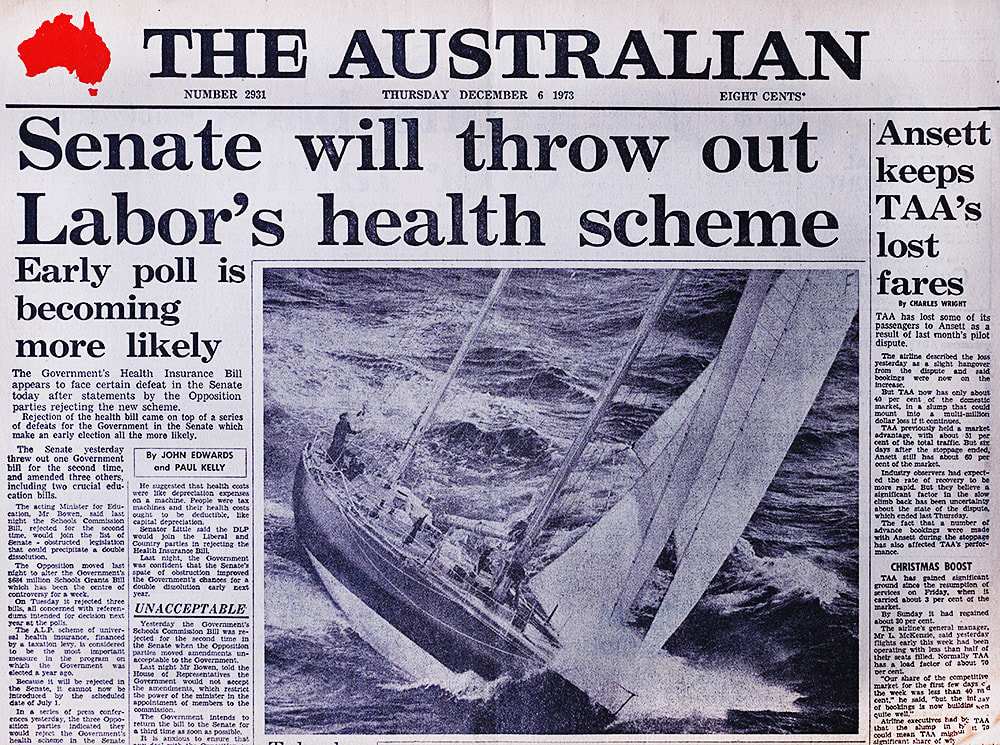
Eric Tabarly’s ketch Pen Duick V1 ploughs through heavy seas of the NSW coast during the 1973 Whitbread ‘Round-the-World’ race. One of my front page images during the time Adrian and I worked at ‘The Australian’ newspaper in Sydney : Photo © Milton Wordley.
Editing the magazine from 1978-1982 meant I found myself in Sydney’s small wine and food scene where I was able to eat and drink in the company of knowledgeable people like Len Evans, Max Lake, Harry Brown, Bruce Tyrrell and John Ellis, then at Rosemount.
It was an exciting time in Sydney with so many things going on in the restaurant and wine scene.
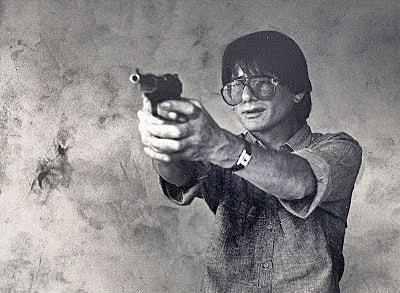
Tony Bilson does a Bronson pickin’ some soup tins off the fence : Kangarilla circa 1988 : Photo © Philip White : DRINKSTER.
Younger people won’t remember Anders Ousback but he was a great character and hugely influential.
Power couples, as they might be called now, Michael and Judy McMahon, Michael and Monique Manners and Tony and Gay Bilson were enjoying the limelight as restaurateurs.
I was very sad at Tony’s death (in early January).
He was an important trend-setter and inspired many people .
Geraldine Pascall Foundation ?
I lived with Geraldine Pascall on and off between 1970 and 1975.
She was a flamboyant journalist who worked for The Australian and took over the Indulgence pages of the Weekend Oz from Len Evans.
We stayed friends — and then she died suddenly of a stroke in 1983, on my birthday!
She was only 38.
She didn’t leave a will and we, her friends, were eventually able to sell her house and set up Australia’s only major annual award for critical writing.
It was important because it was worth $15,000 in cash to the winner, but we started to run out of money a few years ago and the Pascall Prize is now part of the Walkley Awards for Journalism.
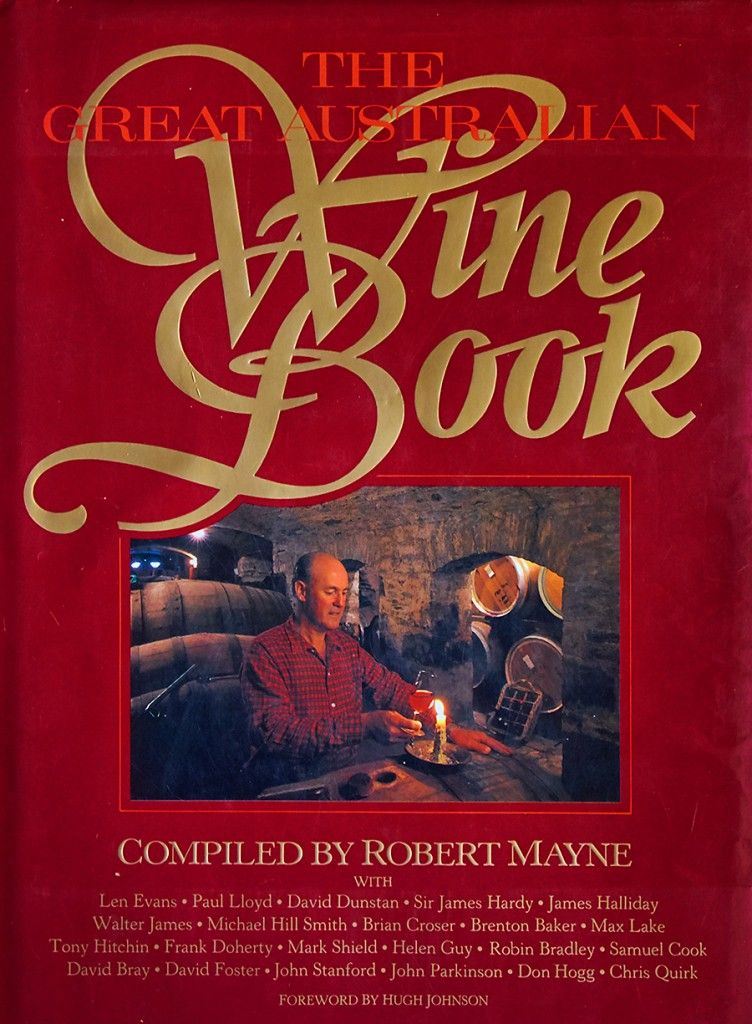
‘The Great Australian Wine Book ‘ I worked on with Robert Mayne in the early 1980’s : Photo © Milton Wordley.
Wine Press Club of NSW
I was a founding member of the NSW Wine Press Club (in 1978) with people like Robert Mayne, Deeta Colvin, Betty Hinchliffe, John Stanford, Gerry Sissingh and Roger Brown.
James Halliday was chairman and Len Evans took over when James moved to the Yarra Valley.
Huon Hooke and Nick Bulleid were early Presidents.
The idea was to bring the mainstream media and the wine industry closer together, but it never really did this.
We did start events such as the Sydney Wine Show Lunch which has become a tradition, and the NSW Wine Awards, with the help of Sydney InterContinental GM Wolfgang Grimm.
I was president from 1994-1996, the first non-journalist to hold the position.
The Club eventually morphed into Wine Communicators of Australia, a much bigger and more successful national organisation.
It was the next generation of wine professionals, people like Darren Jahn and Angie Bradbury, who really brought together all the elements of wine trade, media and a much bigger wine industry.
Read McCarthy & Penfolds ?
Gourmet magazine was never a full-time job and in the late 70s I took my contact book and moved into PR, eventually founding Read McCarthy (with Craig McCarthy, a close friend to this day) in 1986.
One of my new-business strategies was to hang around Penfolds like a bad smell.
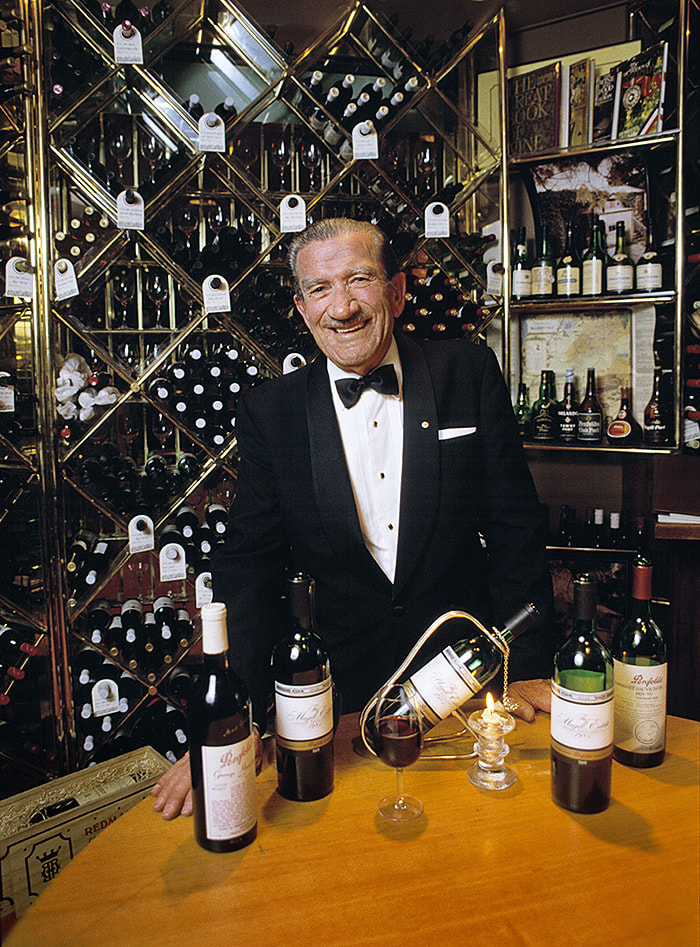
Max Schubert at the first ‘Ultimate Dinner’, Hilton Hotel Adelaide in the mid 1980’s : Photo © Milton Wordley.
It was clear to me that they were simply not taking advantage of the opportunities presented by burgeoning media lifestyle coverage…food, wine, travel and leisure.
I got some project work and we also put together The Ultimate Dinner, a big joint project with Hilton hotels, another client.
The new Penfolds Magill Estate Shiraz was launched at the first Ultimate Dinner in Adelaide.
I must have gained the confidence of then MD Ian Mackley and GM Jim Williams because we were soon on a decent retainer.
I worked closely with marketing managers Tony Sernack, Kevin Jurd and later Brad Camer and Lou Wijeyaratne.
In the second half of the 80s, Grange was headed for trouble, believe it or not.
Media opinion-leaders, notably the late Mark Shield, were openly critical, and influential industry figures such as Brian Croser were promoting single-site and cool-climate wines.
These things began to make Grange look old-fashioned, almost crude.
The Penfolds idea of ‘cellar-styles’, wines that were consistent from year to year because of the blending skills of winemakers able to use grapes from different vineyards and regions depending on vintage conditions, was also being made to look old-fashioned, even though it was consistency that had made Penfolds so successful in the first place.
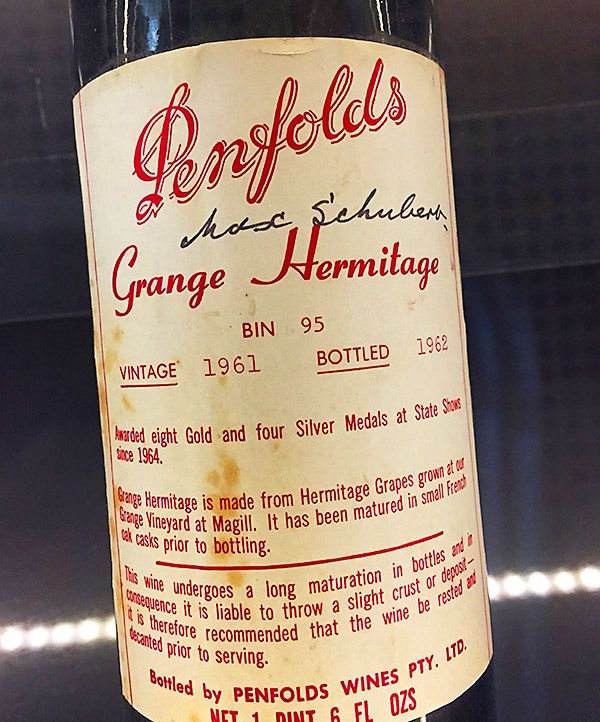
What might a 1961 Penfolds Grange Hermitage signed by Max Shubert fetch at auction now ? : Photo © Milton Wordley
There was also quite a bit of inverted snobbery about Grange then, with its plain, simple label, cheap bottle with no punt and plain brown cardboard box packaging.
It was a sitting duck.
But Grange still had a strong public image and I saw the potential of finding effective ways of telling the stories of Max Schubert and Penfolds with the aim of putting Grange back on a tall pinnacle with very steep, slippery sides, and at the same time strengthening the image and reputation of the other bin-range wines.
As always, the heroes of these stories are the winemakers. Max Schubert, Don Ditter, John Duval and now Peter Gago.
They all embody the Penfolds story and their part in it in their different, personal ways.
One big early project was a roadshow.
I think we called it the Penfolds Red Wine Experience — ticketed events in hotel ballrooms in every capital city with paying customers tasting back-vintage Grange, St Henri, Bin 707, etc, plus one-off wines like 1962 Bin 60A and 1967 Bin 7 which were just then gaining fame… all with Schubert, Ditter and Duval sitting up the front talking about the wines and answering questions.
Every one was a sellout, with the wine media promoting them and the general media doing interviews. Politicians and captains of industry came including, at the Adelaide tasting, John Spalvins of Adsteam, which owned Penfolds at the time.
Read McCarthy did everything. We even handled the money…..
All the Penfolds team had to do was turn up. The whole project didn’t cost Penfolds much with ticket-sales covering a lot of the cost.
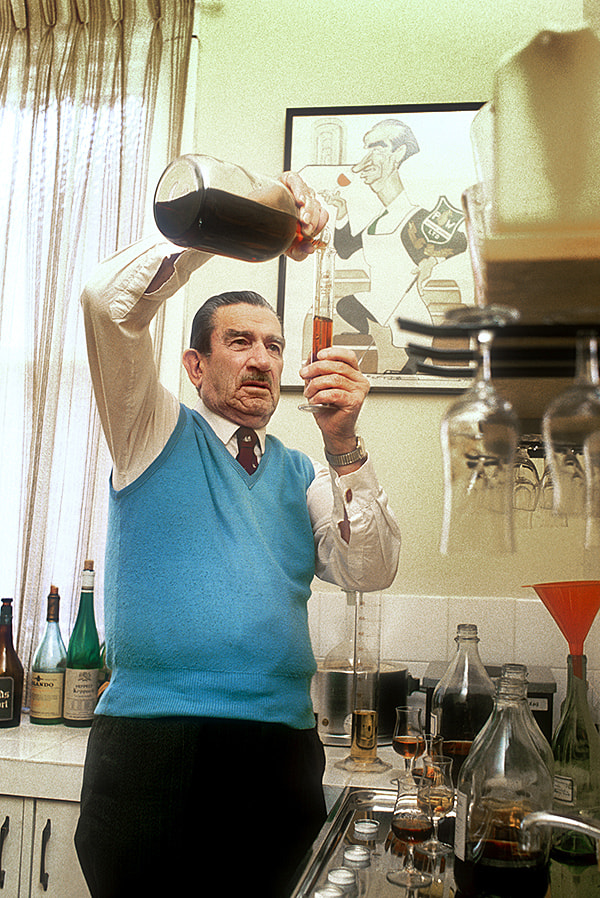
Max Shubert after retirement in his private blending room at Magill in 1983 : Photo © Milton Wordley.
We had to ship 2000 tasting glasses around the country… not one of the big hotels had enough.
At the time a few people accused me of exploiting Max Schubert.
But despite his failing health, Max really enjoyed the limelight.
He knew what he had achieved and he was pleased to have his importance recognised. I think he quite enjoyed becoming a celebrity.
He had no false modesty.
After all, he knew that without his own personal determination Grange would not have existed. (Schubert died in 1994.)
We also exploited Grange’s ‘trickle-down’ effect.
One year we launched Grange with a media tasting in the Barossa that put a number of Granges alongside the same vintages of Koonunga Hill. We wanted to demonstrate that Penfolds was just as proud of its (then) $5 wine as it was of Grange at $60 or $70 a bottle.
It made a good story, because it was much more relevant to the average drinker, and it showed that a Penfolds red wine designed for early drinking could also improve with age.
That exercise seriously ‘moved the dial’ for Koonunga Hill.
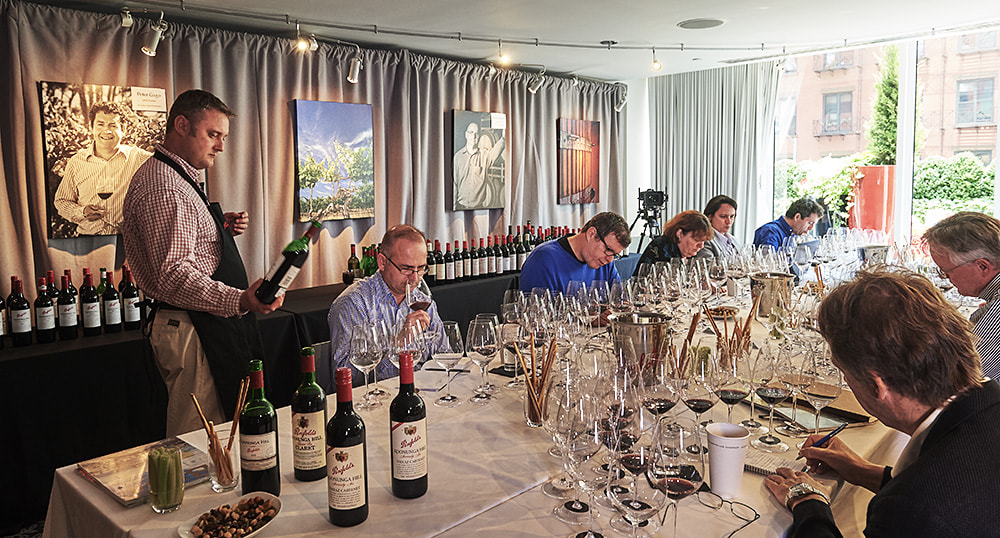
The Koonunga Hill wines tasting bracket at the New York ‘Rewards of Patience’ tasting in 2012 : Photo © Milton Wordley.
Also, there was Penfolds 150th anniversary in 1994.
Rather than make a fuss about the birthday itself, we used the whole year to exploit Penfolds’ white wine development program, with regular releases of experimental whites, from various regions and varieties, leading up to the launch of Yattarna Chardonnay in 1998.
Everybody knew that the ‘White Grange’ was coming, so the story had the legs to go for years, especially when Penfolds was then seen primarily as a red wine producer.
We did get to have a good Birthday Party, though, with the opening of the Magill Estate Restaurant.
Penfolds Red Wine Clinics
In 1989 or 1990, then marketing manager Kevin Jurd showed me a small advertisement in (U.S.) Wine Spectator magazine which announced visits to various cities in Texas by the maître de chai of Château Lafite.
Collectors were advised that they could make private appointments to have old bottles recorked.
He asked me:
“Do you think we could do that ? ”
I thought for a minute and then said something like: “Not only can you do it, but you can do it as a public event, and it will attract so much attention that once you start, you will never be able to stop”.
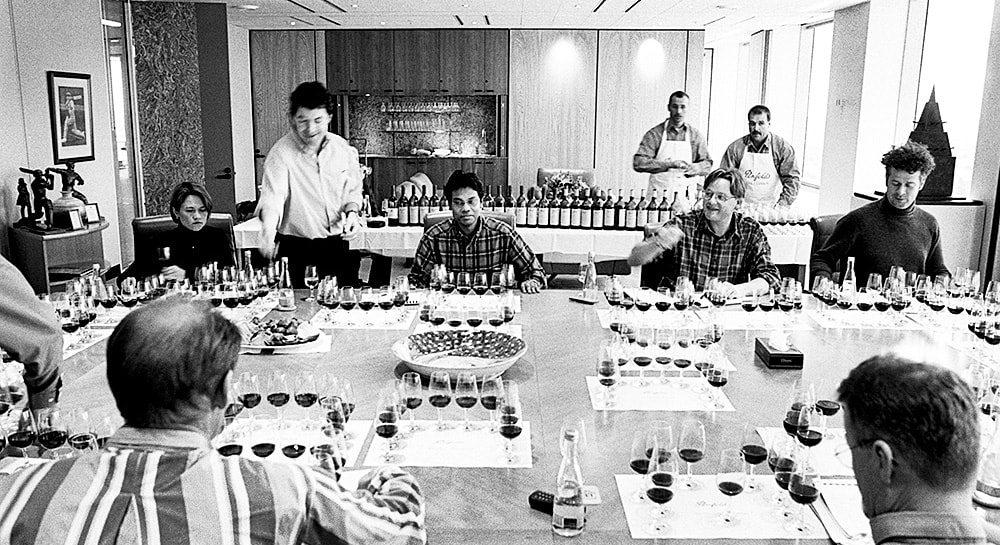
A much younger Peter Gago pours a bracket at the fouth RoP tasting Adrian was very involved in organising : Photo © Milton Wordley.
My thinking was that the exalted status attached to hundreds of different labels in Europe was, in Australia, attached to only one, Grange.
St Henri was probably next and the only non-Penfolds wine even vaguely in the picture was Henschke Hill of Grace.
Grange was already our most collected wine, but it also seemed that almost every household in the land had a bottle or two somewhere, waiting, year after year for ‘the right occasion’.
I was asked to scope the project.
The winemakers, led by John Duval, were generally on-side, but management took some convincing.
For years Max Schubert had recorked old bottles by hand at his office in Magill for friends and acquaintances.
There was even a portable recorking machine at Nuriootpa designed by Penfolds technician (the late) John Rogers.
But in America and Europe purists saw recorking as tampering. Wine Spectator, a major authority, was against it.
But I felt that Australia was different and that Penfolds could do it.
I was good friends with Andrew Caillard, who was running Langton’s Wine Auctions in Sydney.
Langton’s had established a relationship with Christie’s auction house in London and was using it to give the Langton’s brand international authority.
I believed Langton’s and Christie’s endorsement would validate recorking and overcome the negatives.
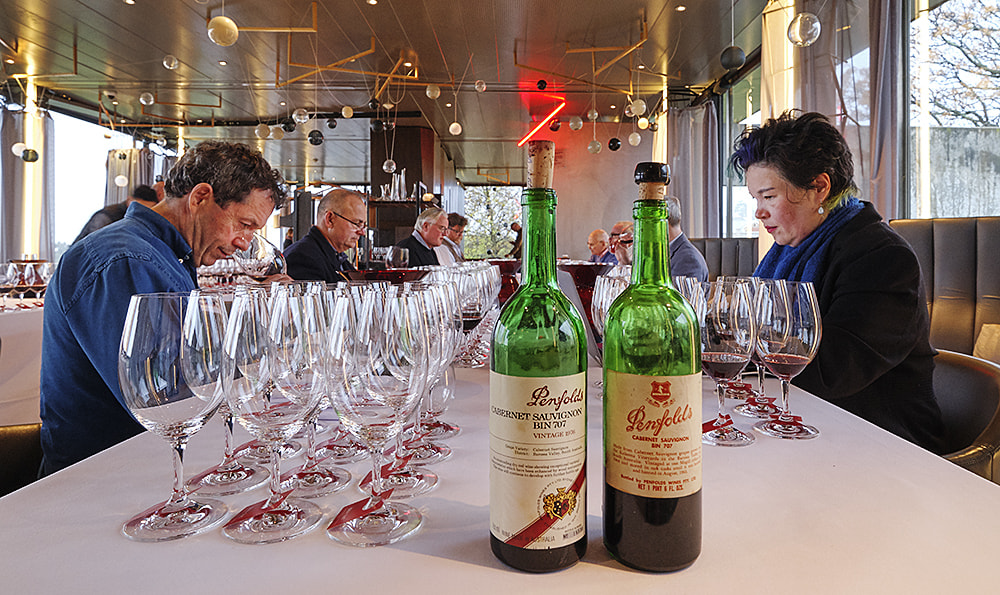
Peter Gago and Fongyee Walker at the most recent and the eight ‘Rewards of Patience’ tasting : Photo © Milton Wordley.
Their support also ensured that ‘clinic’d’ bottles would not be rejected for listing at auction.
The Langton’s-Penfolds collaboration began with these initial meetings and continues to flourish 30 years later.
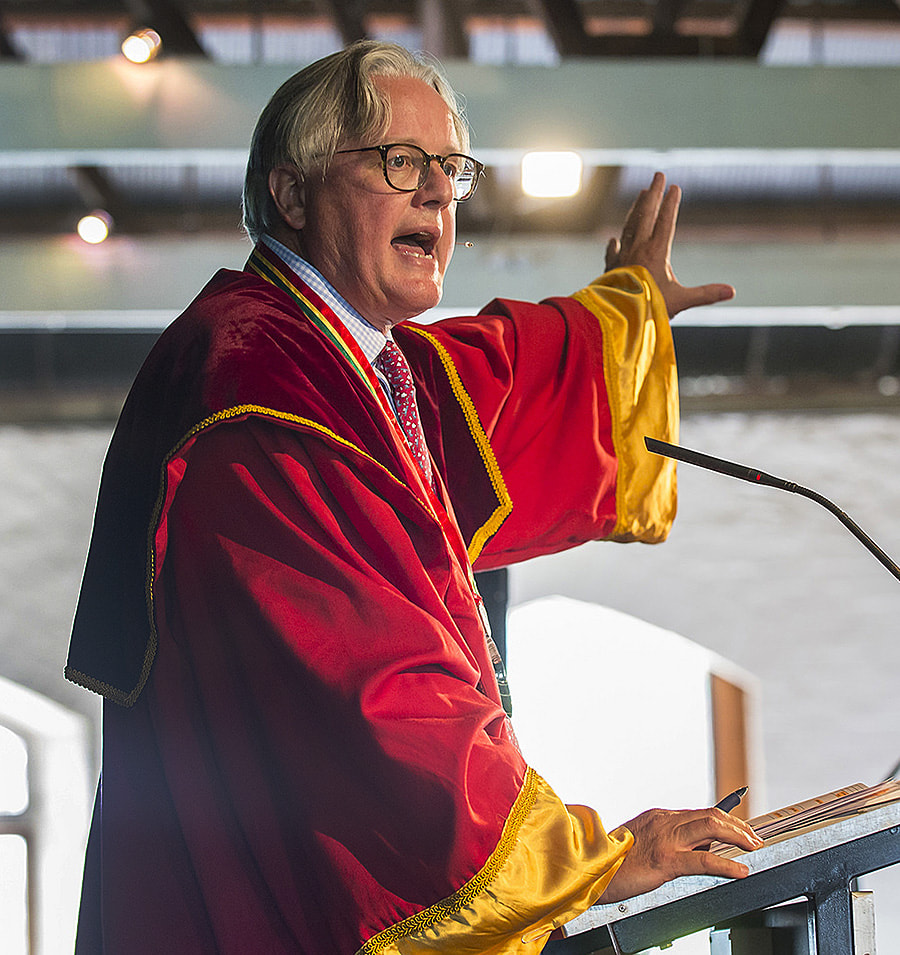
Andrew Caillard a ‘Baron of Barossa’ – a title rarely given to non-Barossans, at work during the 2017 biennial Barossa Wine Chapters Auction : Photo courtesy of the Barossa Herald.
The Clinic back-labels on 150,000 or so recorked Penfolds bottles carry the Langton’s as well as the Penfolds logo.
Late in 1991 the first Clinic was held in Perth.
There were a few teething problems, mainly with the time it took to deal with glued-on foil capsules and crumbling corks, but the Clinics went well from the start.
They attracted enormous general media coverage, including a lot of TV.
To be assessed and recorked, bottles had to be at least 15 years old, so the Clinics were portrayed as ‘the ultimate in after-sales service’.
Most of the bottles that turned up had been stored well, and when there were disappointments we were mostly confirming what was already fairly obvious.
‘At least I know now’, people would say, and either way, what they loved was the chance to tell their stories to winemakers like Don Ditter, John Duval, Steve Lienert, John Bird and later, Peter Gago.
And of course, the winemakers loved tasting all the old vintages and knowing their work was appreciated.
Over the years, most of the winemakers in the group got a turn at the Clinics.
I think Fiona Donald was the first woman, and there have been more since.
People sometimes suggested that the Clinics were simply a PR exercise. My response was to remind them that bottles that failed the Clinic process were rendered unsaleable, if not valueless.
But yes, the Clinics did attract publicity, because so many great stories emerged.

This collector isn’t going to the ‘Crying Room’ at the 2012 Melbourne ‘Recorking Clinic’ : Photo © Milton Wordley.
People arrived cradling their bottles like babies, and their stories showed that Penfolds is genuinely a part of the Australian culture.
Even collectors generally didn’t mind having bottles rejected if the wine was clearly no longer any good.
It showed their generosity, too.
But the Clinics also showed the resilience and soundness of Penfolds wines across all sorts of climates and storage conditions.
Rejected bottles mostly came from places where heat was a problem or where the cork had completely failed.
I think it was (wine writer) Max Allen who suggested that we should have a ‘crying room’ for unlucky owners, but considering the number of people who have attended Clinics, there have been few tears.
The Clinics have weeded out practically all badly stored old bottles, which gives Penfolds extra kudos at auction because of the reduced risk of getting a dud.
Read McCarthy handled every aspect of the Clinics until 2000… customer contact, logistics, everything.
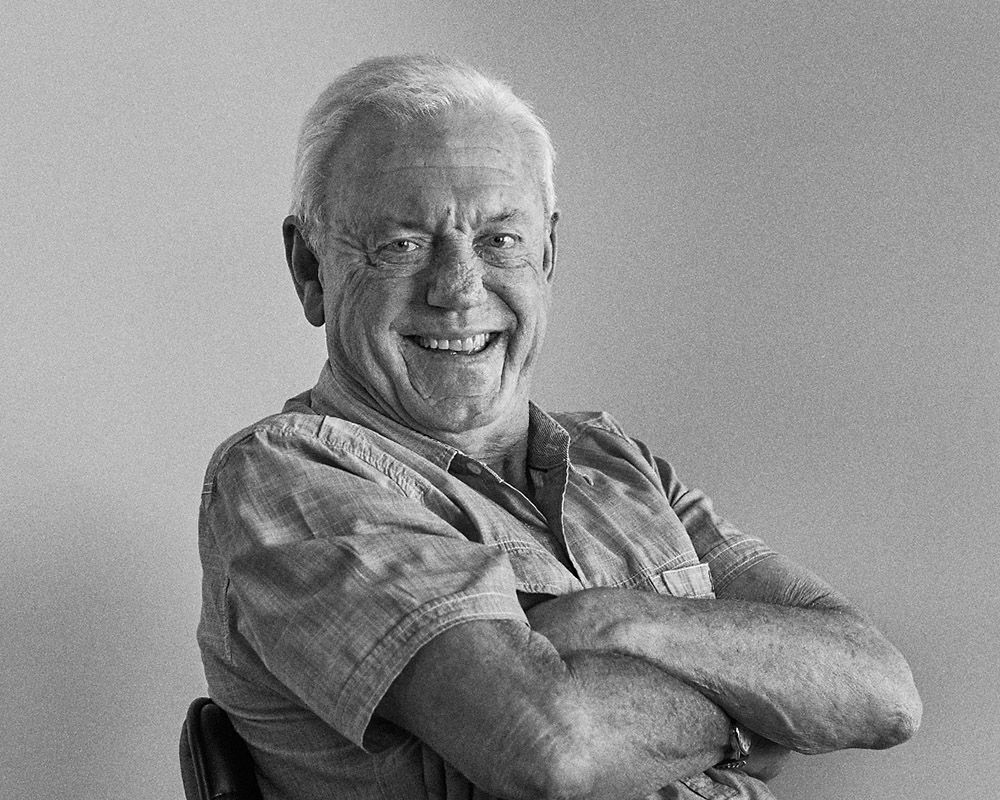
John Bird : Photo © Milton Wordley
But as Penfolds became more corporatised (after the merger with Rosemount), the writing was on the wall for an external consultant largely controlling the public face of the group’s most important brand.
At the early Clinics people brought wines with bin numbers that Penfolds didn’t know existed.
Don Ditter (who has since died) and John Bird were invaluable because they could remember the earliest days of experimental Penfolds wines and the development of Grange.
The oldest bottle we saw was a pre-Penfolds 1896 St Henri Claret in Tasmania.
In the 21st Century, Peter Gago has taken the program to another level, with demonstration Clinics all over the world asserting Penfolds unrivalled leadership in recorking.
The program also demonstrates that a multi-region, multi-vineyard winemaking policy delivers some of the most reliable great wines in the world, and probably also helps explain why no other wine producers have followed Penfolds’ lead.
The Rewards of Patience and other books ?
The two great things about Penfolds are the unique status of Grange among Australian wines, and the fact that on top of that Penfolds has successful wines at every price point and in every style.
This is also unique in the world of wine.
The aim was always to harness these advantages to support the brand in the marketplace.
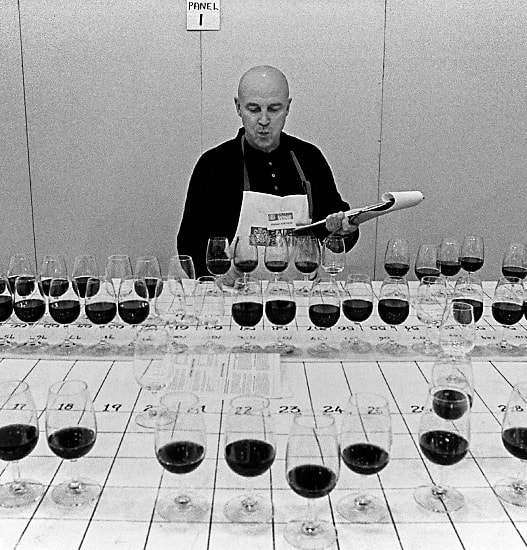
Michael Hill-Smith, Australia’s first Master of Wine, judging at the Royal Adelaide Wine Show : Photo © Milton Wordley.
So it’s all about validation, credibility and authority.
The first Rewards of Patience in 1985 was not much more than an elaborate brochure.
Don Ditter’s notes on the wines were very brief and the other material was often a bit sketchy.
I suggested that we do the second edition properly, and get an independent taster to join the Penfolds winemakers.
John Duval invited Michael Hill-Smith, Australia’s first Master of Wine.
Having the confidence to do this sent a strong message to the marketplace, and repeating the exercise every four or five years since then, expanding the tasting panel each time.
RoP has helped mature the market and improve understanding of the lifecycles of all the Penfolds wines.
RoP has a gravitas and authority that gives the wines context and credibly asserts their prominence.
I wrote the second edition, and co-wrote the third and fourth with Andrew Caillard, who came on board to compile the tasting notes.
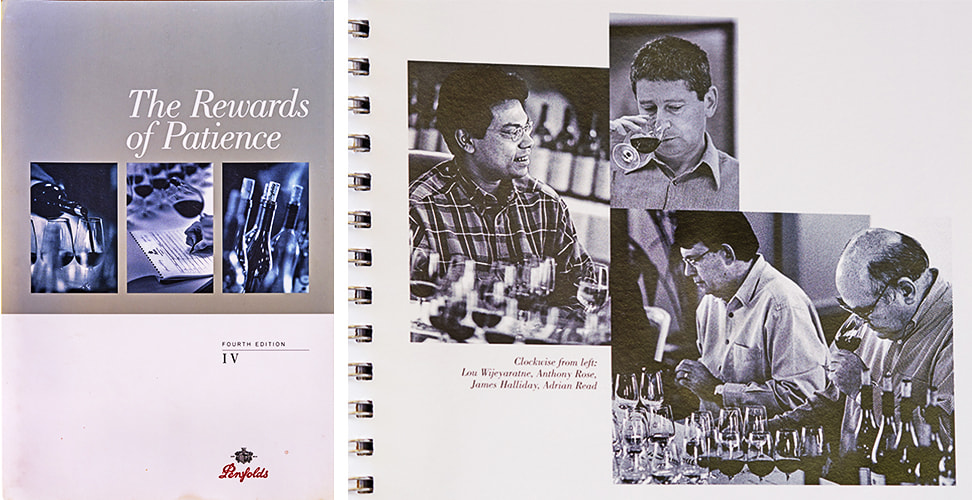
Adrian hard at work with James Halliday during the ‘Rewards of Patience’ book four tastings : Photo © Milton Wordley.
Andrew took over after 2000 and wrote the fifth, sixth, seventh and eighth editions.
It’s very difficult to imagine another wine company being able to do something like RoP.
Penfolds has a remarkable range of wines. Through some luck, considering the corporate takeovers, it had a good stash of experimental wines and library stock.
Even when Penfolds decided to get seriously back into white wine, the transition was seamless and I am sure the Rewards of Patience and the strong narrative associated with the development of Yattarna Chardonnay helped.
When RoP #8 is released later this year it will be almost 35 years since it was first published.
I also arranged for Penfolds to underwrite Huon Hooke’s biography of Max Schubert, called Max Schubert: Winemaker.
Max’s family were a bit upset about the way John Davoren’s relationship with Max Schubert was portrayed, but Huon felt the somewhat combative account reflected his conversations with Max.
The book went into a second edition and is an important document.
But for me the best memories were spending a week with Max at Magill Estate with him taking us through his scrapbooks and photographs.
Memorable moments ?
Well, I’m one of the few outsiders who has tasted all the old Granges, and all the special bin wines from the 60s to the 90s, on multiple occasions.
It was always exciting at Clinics when an early 1950s Grange was opened.
A little crowd would gather, and the tension and relief – if the bottle passed – was almost palpable.
Failure was always a possibility, and sometimes happened, causing disappointment but rarely dismay. The small human dramas that played out at the Clinics were always memorable.
I also participated in a syndicate organised by James Halliday to buy a double-magnum of 1865 Chateau Lafite Rothschild at auction in London.
It was opened (with a whole lot of other amazing wines) at a dinner (in 1991) at Len Evans’ Tower Lodge in the Hunter Valley.
The wine cost us $3000 each and the dinner plus a weekend at Tower Lodge was another $2000.
It was worth it. The wine was amazing — still some red in the colour, delicate but persistent aroma and even primary fruit on the palate.
It was more than an hour in the glass before it began to fade even a little.
Ironically, perhaps, it had been recorked in the 1930s.
Recent times ?
After I left Read McCarthy, I worked with Heritage Fine Wines which had a spectacular rise and fall, built on selling wine as an investment.
After that I co-founded Wine iQ, a private wine brokerage service, providing advice and access to fine wine for time-poor customers. Wine iQ’s parent was Cellarforce, the start-up that pioneered winery outsourcing of direct marketing.
Both Cellarforce and Wine iQ were innovative and progressive. We went into a joint venture with Cellarmasters and were taken over by Woolworths in 2011. Woolworths had already bought Langton’s in 2009.
When Woolworths merged Wine iQ into Langton’s I felt completely at home.
I could see the combination of youthful energy, technology, investment and probably the best fine-wine customer list in the country would propel the business forward.
Under corporate ownership we could invest in more stock and secure allocations previously out of our reach.
Langton’s is not just a business but also an institution in Australian wine, largely because of its authoritative Classification of Australian Wine.
Despite the inevitable ructions that come with moving from private to corporate ownership Langton’s has prospered.
Langton’s GM Jeremy Parham, a co-founder of Cellarforce and Wine iQ, and long-time Head of Auctions Tamara Grischy both have a deep understanding of the business and are realising its potential.
The future ?
I have a great love for classical music and opera.
It sustains me, and I hope it continues to do so for a long time yet. I’m headed for Paris at the end of the year for the Paris Opera production of Wagner’s Ring Cycle, and I guess I should say I’m open to offers of freelance work. I find it hard to imagine life without some kind of wine industry involvement.
I’m also moving from Sydney to Melbourne, which should be a good stimulus as I enter my 75th year.
The future doesn’t have to be more of the past.
It’s there to be created.
I think it’s looking forward creatively that automatically makes life satisfying and joyful.
What’s the advice I’d give to anyone coming into the wine industry ?
“Be curious and seek opportunities to drink and taste wine in knowledgeable company. Understand that the history of wine is the history of civilisation”.
ENDS.
Interview & words : Andrew Caillard
Portrait : Neil Duncan
Production : Milton Wordley
Edit : Anne-Marie Shin
Website guru : Simon Perrin Version Design










